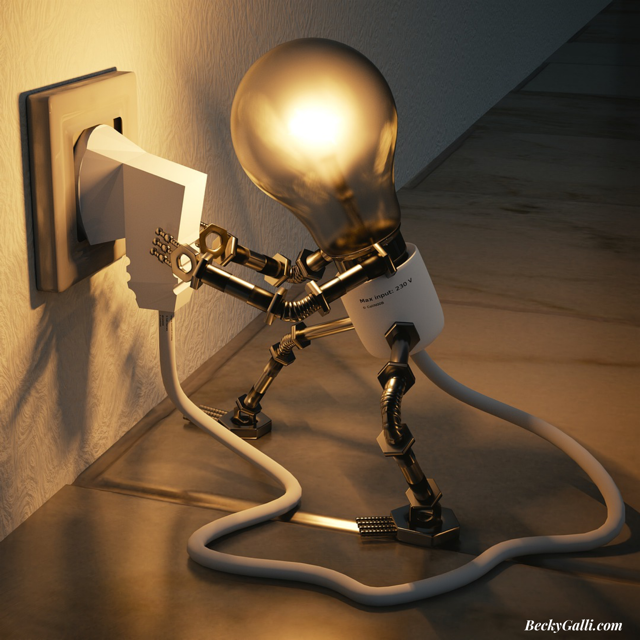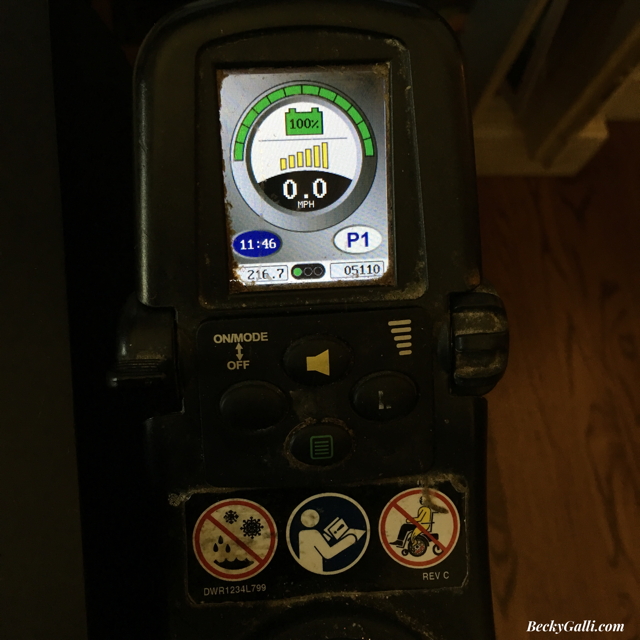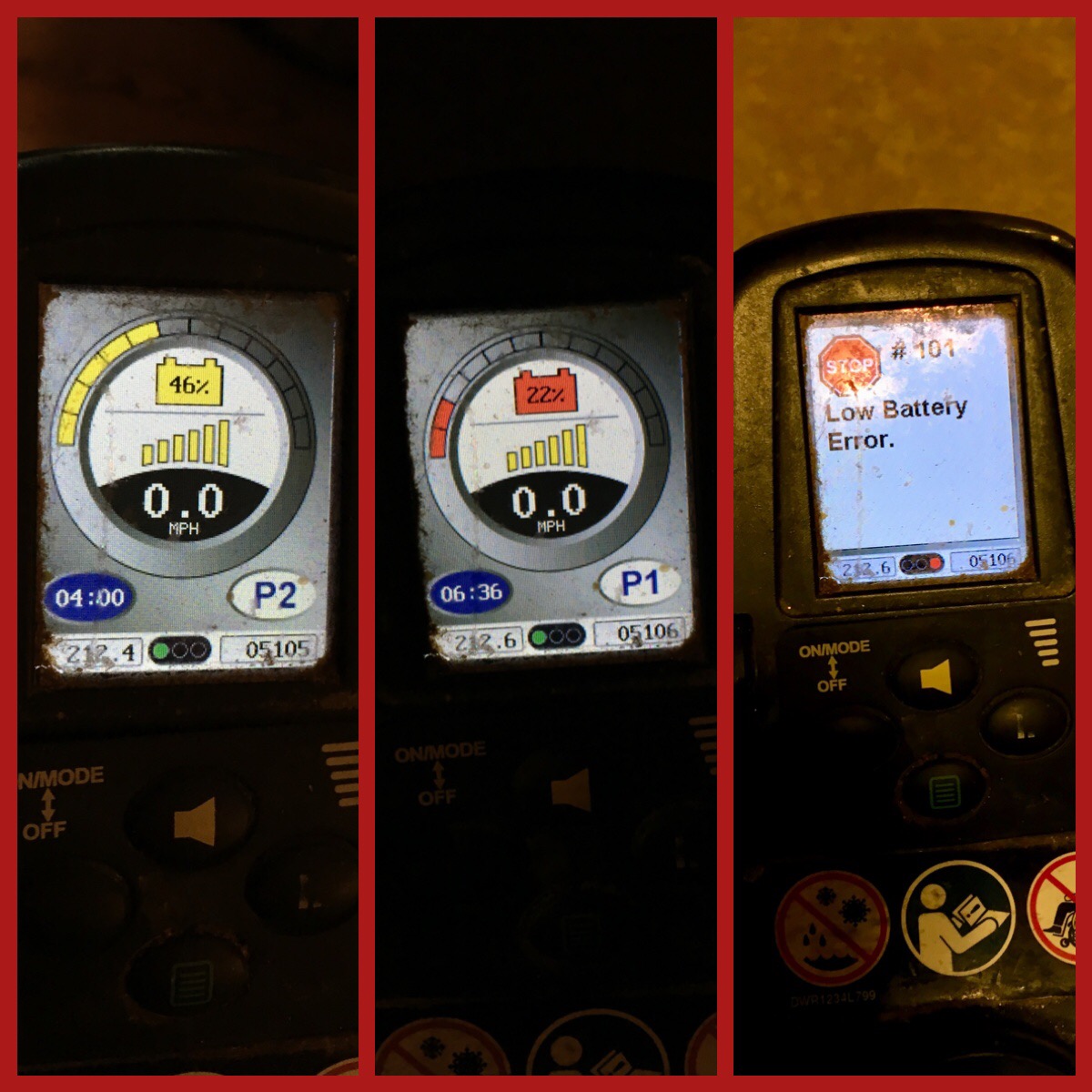
This week’s inspiration comes from an unlikely source: my back-up wheelchair. As I mentioned last week, for the first time ever, my power wheelchair was damaged beyond safe use.
Thank heavens my back-up one had survived my many Marie Kondo endeavors of “tidying up.” Although the 10-year-old battered wheelchair squeaks and has a broken chassis that makes me lean sideways, she was safe to use, the service technician assured me.
Granted, she doesn’t particularly “spark joy.” But she did offer a mighty fine “Plan B” option, something I seem to need a lot of these days. I’m glad I chose to keep her!
Unfortunately, the ol’ gal’s battery did not hold a full charge, I learned quickly after only an hour of use. Suddenly, my life was governed by an energy source outside my own.
At least I had an indicator.

A fully charged battery usually lasts a day or more for me, allowing me to zip around full-speed (7 mph!), tilt back, and elevate up, all battery-draining options that let me live my life comfortably and at my own pace.
But not with this battery.
The trip from my bedroom to the back door to let the dog out used 22% of the battery. The move from the back door to the kitchen for a cup of coffee took another 20%. Even the short jaunt from the kitchen to my sunroom for my morning quiet time cost me another 18%.

When the battery indicator entered the red zone, I’d slowly go back to my bedside wheelchair charger, plug in, and sit for an hour or so until I had enough charge to venture out again.
My poor dog, Tripp, suffered the most. I was afraid I couldn’t make it down the driveway and back without depleting my battery. So, no getting the newspaper at dawn. No getting the mail at noon.

I batched my activities, reduced my speed, and gave up those non-essential comforts of tilting and elevating. It became a quiet day of sitting still—reading, writing, reflecting—in the midst of a whole lot of recharging.
After the third recharge or so, I began to chuckle at my new lifestyle. Before I chose to do anything, I had to assess the task, subjecting it to a full cost/benefit analysis.
Was the effort worth the energy expenditure?
Then I began to wonder, what if we had our own energy indicators? What if we had an instrument that could tell us exactly how much energy a task took? And notified us when we were depleted?
Would we make different choices? Look at life differently?
My mom used to say that we only have 24 buckets of energy a day, noting that we should choose carefully how we use each one. She would consider activities based not only on the time commitment, but also on the energy requirement for it.
How wise she was!
We budget our money. We budget our time. Maybe we should also budget our energy.
Although I learned a lot from my day of “energy management,” I was beyond grateful when a new battery was delivered and installed. I still squeak and lean sideways, but I’m back in action until the other wheelchair can be repaired. Stay tuned!
How about you? How do you stay charged in challenging times? Do you budget your energy? What indicators do you use?
Tell me about it. I’d love to know.
My best – always,
Becky (Nana B)
P.S. Thanks for your good wishes about the “History Maker” honor and Montaigne Medal award. Ever grateful for your support and encouragement!
P.P.S. In case you missed it, copies of my Seven Strategies to Stay Up While Life is Pulling You Down are available to download HERE.
Sign Up Here, if you’d like to receive Thoughtful Thursdays via email.
Follow Me!